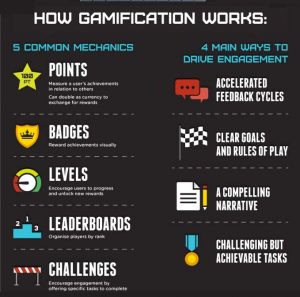What is Gamification in Education?
The world today has evolved. We are in the digital age and everything in and around us has transcended to ICT. Now, we even wonder as to how people survived when there was no internet or the kind of advancement we have in technology today. This advancement has also been inculcated into our educational system, by way of using games to improve the way students learn – hence the term “gamification in education”.Gamification in education is the transformation of academic resources into gaming to help, inspire, motivate and challenge students both individually and collectively to be better students. The object is to make students see that they can overcome hurdles and challenges in a fun way and it doesn’t necessarily have to be difficult. They also at very early stages of their lives begin to appreciate the benefits of group/team work as this will be very important while using games in the classroom.One of the major reasons to indulge in educational gamification is to make the students engrossed, i.e. for the students to dedicate a lot of attention into the game. This way, the students now imbibe the habit of paying rapt attention into whatever it is they are doing. In fact, this is the whole idea of gamification in the first place; for the student to learn how to pay undivided attention into whatever it is that’s being done. If this is attained, then the teacher has achieved much. For gamification to fully occur, there are some key features that are worthy of note. Some of these features include:
The students who will actually play the game under the supervision of the teacher. In this scenario, the students are also called users.
The task with which the users need to undergo to advance to the next level.
The points that will be earned when tasks are accomplished.
The badges or medals that will be given to the users once levels have been completed.
The users will be ranked according to who completes levels faster and better.
On how to gamify in education, well, it’s quite simple, but the teacher must first know the capabilities of the students in question. The teacher must know if the tasks to be executed by the users in the game are not too intense for them to indulge so there won’t be a back fire. Also, the objective of the game also needs to be spelt out to users, so they understand the reason why they have to indulge in the game in the first place. Another way to add games into education is to start gradually, and then increase the difficulty level gradually. This way, users get to progress, accumulate points, acquire medals and attain ranking. In the long run, they become more attentive and develop a friendly competitive attitude.Some of the software used for gamification in education include the following:
Classcroft
Brainscape
DuoLingo
Zondle
PlayBrighter
These are just a few to mention from. The list is quite unending.In conclusion, gamification in education has an all-round effect on the life of a student. They now believe learning is fun. They also develop better and longer attention span and learn how to interact better with other people. This is a major step in the right direction for our educational process.[embed]https://youtu.be/v5Qjuegtiyc[/embed]References:https://www.teachthought.com/the-future-of-learning/12-examples-of-gamification-in-the-classroom/http://edtechreview.in/news/324-examples-gamification-in-educationhttps://www.classcraft.com/gamification/https://study.com/academy/lesson/what-is-gamification-in-education-definition-research-strategies.html#partialRegFormModalhttps://ii.library.jhu.edu/2014/05/13/what-is-gamification-and-why-use-it-in-teaching/

